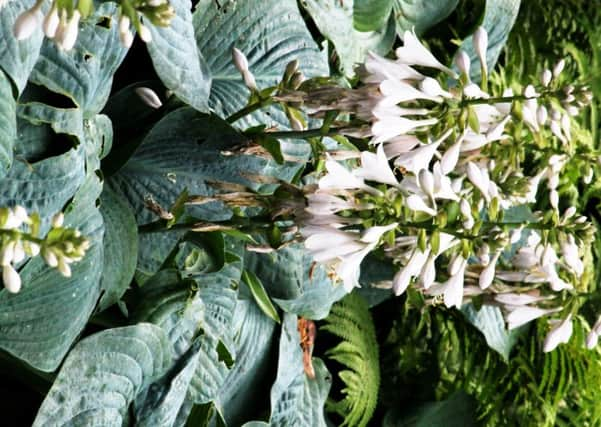Gardening: Woodland wonders


Everybody seems to have their own take on hostas – some people love them to bits while others believe their only value is as compost-bin fodder.
I can take them or leave them but I have to admit that a healthy, happy hosta is a definite plus in the garden. Those lovely, luxuriant leaves are unmistakable and are followed now by handsome blooms that make the plant a valuable asset, particularly in a shady spot.
Advertisement
Hide AdAdvertisement
Hide AdHostas are the wonders of the woodland garden, as well as being marvels in borders and beds and ideal occupants for containers where their succulent leaves can be offered some sort of protection from another of their fans – the snail.
Depending on the variety, those leaves could be yellow, green, grey-blue or variegated, heart-shaped, or ovate. They grow quickly, but not fast enough to thwart a hungry snail. And gardeners may not be aware of the damage being done until it is too late. Tiny, pin-prick-sized holes expand as the leaves grow; by summer, they will be bonafide holes and the foliage will look like it’s being shredded by a shotgun blast.
But all this shouldn’t – and doesn’t – deter people from growing these fascinating and beautiful plants.
Hostas are a clump-forming plant, which really helps if you want to populate an area. If you dig up established clumps, it’s possible to split them and replant the resulting halves, doubling the delight of both gardener and, unfortunately, forager.
Advertisement
Hide AdAdvertisement
Hide AdHostas do well under deep-rooting trees and are perfect near water; they appreciate shade. As perennials, they die back completely in winter, the new spear-like shoots of the tightly-rolled leaves appearing in spring, when they are at their most vulnerable from attack.
Most hostas are fully hardy. They need a reasonably fertile, moist but well-drained soil, and yet it’s important to stop them drying out. In the garden, spreading compost over the surface (mulching) in spring should do the trick. In a container, regular watering is essential. And covering the compost with a layer of sharp gravel will not only keep in moisture – it may also deter slugs.
Some gardens are fortunate enough to be mollusc-free, so hostas grown there can achieve their full potential. Most gardens, however, are home to numerous snails and slugs and the gardeners have to decide whether to fight for their hostas or admit defeat and grow something else. Decisions, decisions...